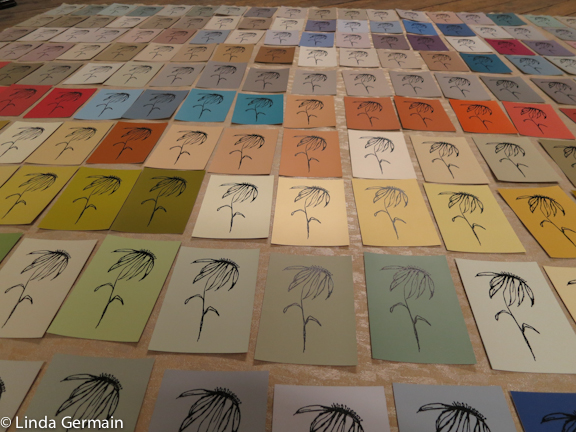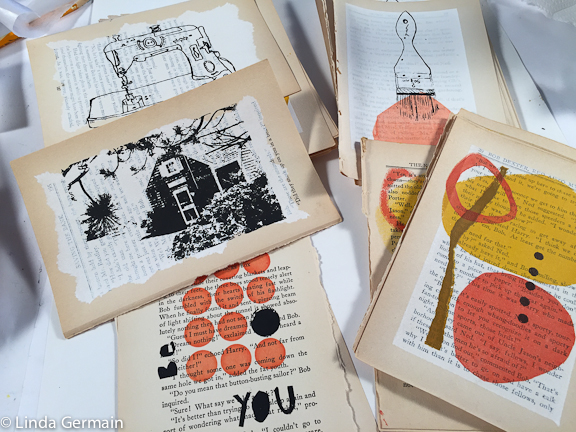I get lots of questions about screen printing at home and the benefits of using the process. So I wanted to share the answers here with you.
1 – What is screen printing?
It is a printing process that uses a “stencil” to control the passage of ink through a screen to create a repeatable image. Stencils can be made with paper, drawing fluid, emulsion and even wax. The stencil blocks out all the areas of the screen except for where you want the ink to print.
2 – Do you need special machines to screen print?
Easy answer is no. I do use my computer, scanner and printer to manipulate my images. I bet you already have a computer and printer.
3 – Do you need a special studio space?
Not really. I have screen printed in my apartment. It is easier if you can claim some space for printing and drying your prints. The bigger you print the more space you will need. But to get started you can use the tables and floor space that you already have.
4 – What tools do you need?
That will depend on what you want to print on and the kind of design that you want to create. But at a minimum you can get started screen printing with just:
- An embroidery hoop
- Tightly woven curtain sheer
- Paper, scissors and tape
- ink (acrylic paint might work in a pinch)
- old credit card
- Check out my free tutorial below using just these materials.
5 – What kind of ink do you need?
It is always best to get the ink that is designed for the surface that you are printing on, so acrylic screen ink for fabric or paper. The ink should be smooth and not runny. If the ink is too fluid too much will go through the screen and you may have a blobby mess. In a pinch with a “disposable” screen and working quickly you could use acrylic paint, but it is not ideal. There is a screen print medium that is available to mix with Golden acrylics
6 – Is the screen print process toxic?
It is only as toxic as the inks that you choose to use. So if you use acrylic inks the process is pretty clean.
7 – What can you print on?
In a home studio the easier things to print on are paper, fabric, wood and cardboard. It is possible to print on ceramics and glass if you are familiar with those techniques.
8 – Do you need to know how to draw to screen print?
I would say not necessary. You can create wonderful geometric images and patterns, you can manipulate photos, use can use text and even copyright free clip art. So don’t let the thought that you can’t draw stop you from trying screen printing.
9 – Does screen printing take a lot of time?
That will depend on your project and goals. Screen printing does require some planning, ink management, and clean up, so it is not as spontaneous as monotype printing. I would break that project into 3 steps, image design and stencil creation, printing and clean up. So a small run of a simple design, in one color, on paper could be done in an afternoon.
10 – What are the benefits of screen printing? And why would you choose the process over another?
I choose to screen print when I want to print a lot of the same image, whether it be yardage of fabric or multiples of cards. I would use screen printing to print very detailed images, like high contrast photographic designs that I could not obtain any other way without a press. Screen printing is also great for printing text.
If you would like to explore screen printing, then join us in the online printmaking class, Pulling Screen Prints. Next class starts Monday, Sept. 9th 2019. Read the details on the printmaking workshop page.
Join today and get notice of future classes.
You will also get weekly emails about printmaking, tips, tools and classes.

